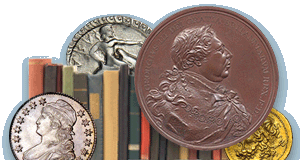
PREV ARTICLE
NEXT ARTICLE
FULL ISSUE
PREV FULL ISSUE
U.S. CONSIDERS REPLACING THE $1 NOTE WITH A $1 COIN
The U.S. General Accounting Office published a report Thursday recommending replacing the $1 note with a $1 coin. Well, duh... isn't that what everyone with half a brain has been telling the government for years? Actually, this isn't a new recommendation from the GAO - several times in the report they state, "like we told you dolts in 2002, 2003, 2004, 2005, 2006, 2007, 2008, and 2009, ..." Well, not in so many words. Anyway, here's an excerpt.
-Editor
In our prior reports, we recommended that Congress proceed with replacing the $1 note with the $1 coin. We continue to believe that replacing the note with a coin is likely to provide a financial benefit to the government if the note is eliminated and negative public reaction is effectively managed through stakeholder outreach and public education. However, we realize that replacing the $1 note with the $1 coin is controversial. We have previously reported on public opposition to using the $1 coin and the challenges that private businesses such as vending machine owners would face if such a transition were undertaken. Several foreign countries have already transitioned from small note denominations to coins, for a number of reasons, including the greater durability of coins and inflationary pressures. Over the last 48 years, Australia, Canada, France, Japan, the Netherlands, New Zealand, Norway, Russia, Spain, and the United Kingdom, among others, have replaced lower-denomination notes with coins. The rationales for replacing notes with coins cited by foreign government officials and experts include the cost savings to governments derived from lower production costs and the decline over time of the purchasing power of currency because of inflation. Stopping production of the note and actions to overcome public resistance have been important in Canada and the United Kingdom as the governments transitioned from a note to a coin. While observing that the public was resistant at first, Canadian and United Kingdom officials said that with the combination of stakeholder outreach, public relations efforts, and ending production and issuance of the notes, public dissatisfaction dissipated within a few years. Canada undertook several efforts to prepare the public and businesses for the transition to the coin. For example, the Royal Canadian Mint reached out to stakeholders in the retail business community to ensure that they were aware of the scope of the change and surveyed public opinion about using coins instead of notes. To read the complete article, see: Benefits and Considerations for Replacing the $1 Note with a $1 Coin (www.gao.gov/assets/660/650373.pdf)
Nick Graver forwarded this Associate Press article on the topic. Thanks.
-Editor
Vending machine operators have long championed the use of $1 coins because they don't jam the machines, cutting down on repair costs and lost sales. But most people don't seem to like carrying them. In the past five years, the U.S. Mint has produced 2.4 billion Presidential $1 coins. Most are stored by the Federal Reserve, and production was suspended about a year ago. The latest projection from the Government Accountability Office on the potential savings from switching to dollar coins entirely comes as lawmakers begin exploring new ways for the government to save money by changing the money itself. The Mint is preparing a report for Congress showing how changes in the metal content of coins could save money. The last time the government made major metallurgical changes in U.S. coins was nearly 50 years ago when Congress directed the Mint to remove silver from dimes and quarters and to reduce its content in half dollar coins. Now, Congress is looking at new changes in response to rising prices for copper and nickel.
To read the complete article, see:
Congress Looks at Doing Away With the $1 Bill
(abcnews.go.com/Politics/wireStory/congress-bill-17844057#.ULpfZ4NlEfM)
The Numismatic Bibliomania Society is a non-profit organization promoting numismatic literature. See our web site at coinbooks.org. To submit items for publication in The E-Sylum, write to the Editor at this address: whomren@gmail.com To subscribe go to: https://my.binhost.com/lists/listinfo/esylum All Rights Reserved. NBS Home Page Contact the NBS webmaster 
|
